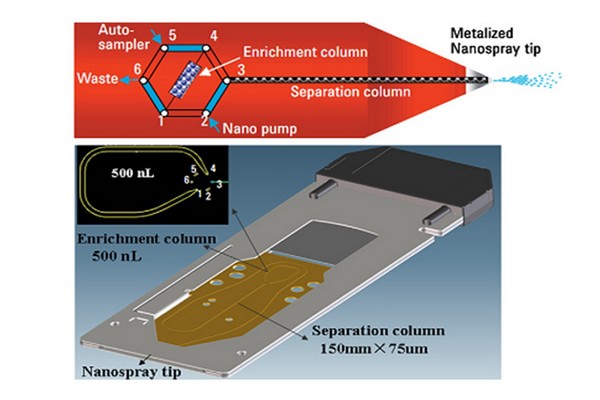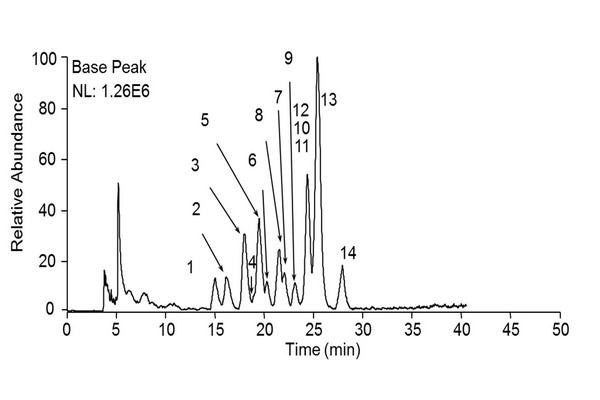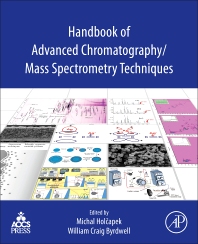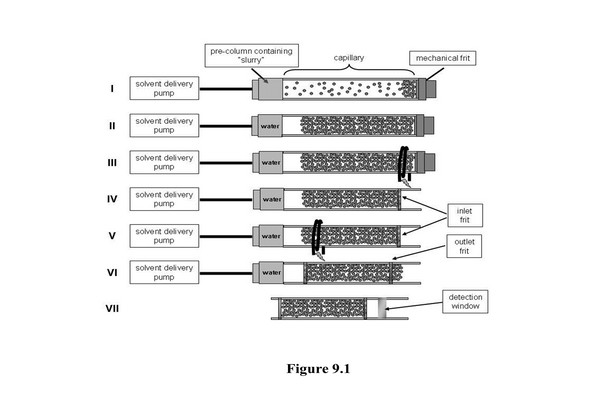
Figure 9.1
Scheme of the preparation of a capillary column using the “slurry” packing procedure. I: packing of the SP; II: flushing with water; III: inlet frit preparation with a heated wire; IV: outlet frit preparation; VI: removal of excess SP; VII: removal of the polyimide external layer for the detection window.
Reproduced from Fanali, C., Asensio-Ramos, M., Hernández-Borges, J., Rocco, A., Fanali, S., 2011. Nano-liquid chromatographic separations. In: Byrdwell, W.C., Holčapek, M. (Eds.), Extreme Chromatography: Faster, Hotter, Smaller. American Oil Chemists’ Society (AOCS), Urbana, IL, USA, pp. 301-380.
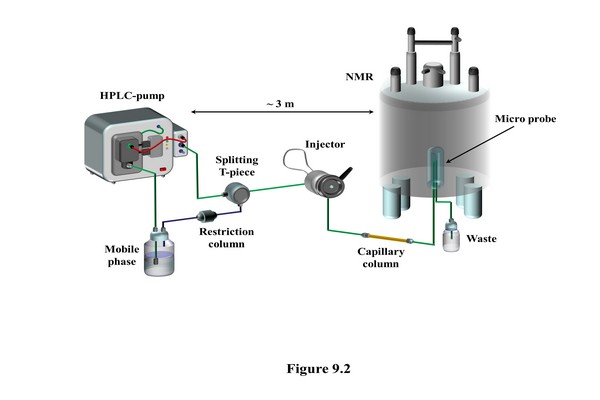
Figure 9.2
Scheme of capillary liquid chromatography coupled with nuclear magnetic resonance (NMR) through a continuous flow NMR probe. HPLC, high-performance liquid chromatography.

Figure 9.3
Schematic representation of a column-switching system coupled with mass spectrometry (MS). ESI, electrospray ionization.
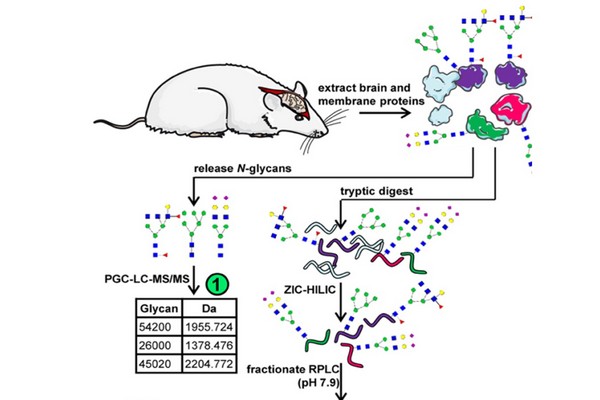
Figure 9.4
Scheme of a multidimensional approach utilizing a global N-glycome characterization followed by parallel analysis of deglycosylated and glycosylated peptides with orthogonal fractionation.
Reprinted from Parker, B.L., Thaysen-Andersen, M., Solis, N., Scott, N.E., Larsen, M.R., Graham, M.E., Packer, N.H., Cordwell, S.J., 2013. Site-specific glycan-peptide analysis for determination of N glycoproteome heterogeneity. J. Proteome Res. 12, 5791-5800 with permission from ACS Publications.
